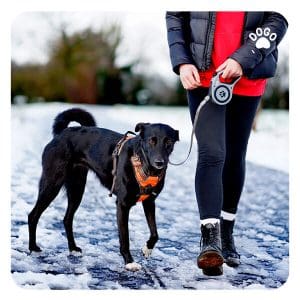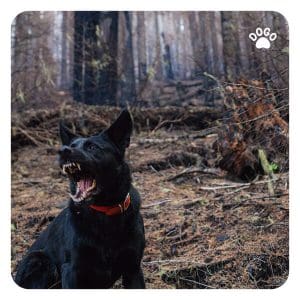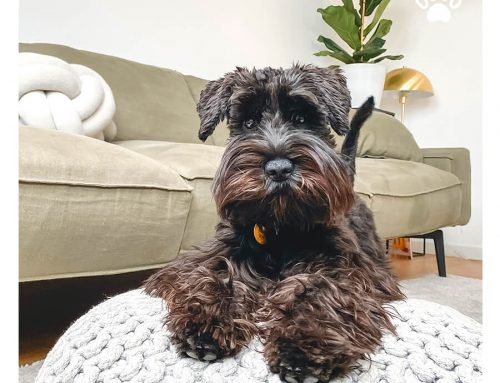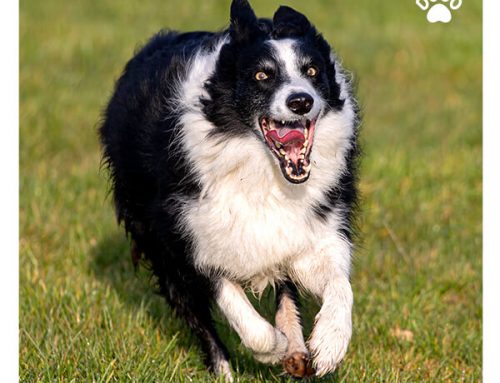
Causes of Aggression Towards People
1. Unpleasant Life Experiences
This is one of the most common causes of aggression in dogs. It happens to dogs that humans have hurt. In such circumstances, people are treated as a potential threat. The dog defends themselves out of fear and is driven by fear for their own life. This type of aggression is not necessarily directed at every human. A dog can be more specific about whom they will attack. For example, if an older woman once severely hurt them, they might react aggressively only toward older women.
2. Lack of Socialization
This type of aggression most often affects dogs that initially lived in the wild or on the street and had no chance to be properly socialized to humans in friendly, welcoming circumstances. During their “capturing” by the animal rescue team, they experience enormous stress. Until now, they were free and independent. Suddenly someone tries to take away their freedom. They feel threatened, often resist contact with humans and attack them. Even if they get used to certain people, they are still distrustful and distant from strangers.
3. Improper Socialization

4. Attempt to Dominate
The desire to dominate usually occurs in maturing dogs and in those who suffer from low self-esteem. Sometimes dogs go through a tough time growing up. There is a storm of hormones, rebellion, and an attempt to bend all the existing rules. The dog tries to establish new rules according to their own preferences. That is why they strongly manifest their strength and independence. Threatening messages such as growling, barking, snarling, or snapping is often displayed for this.
This kind of behavior can also be found in timid dogs, seemingly trying to create an image of dangerous beasts. This way, they scare off potential threats and make it clear that it is better not to mess with them. Dogs very often prove their strength by guarding resources. A defended resource can be anything within the dog’s reach – such as their bed, bowl, favorite toy, the TV remote, or even you! When a dog defends a resource, it increases their self-esteem. That way, they are trying to take control of a situation that initially made them anxious.
5. Violation of Dog’s Personal Space

6. Illness
How do you feel when you are sick? Weak and powerless? That’s exactly how any other dog who gets sick may feel. If your pooch has any health problems, it is possible that they feel insecure and threatened. This is a common cause of your pup’s frustration, nervousness, and aggression. These behaviors can occur when a human gets too close to their furry friend. The dog may also attack when a human tries to touch their sore or injured part of their body.
Dogo Trainer Advice
- Gradually familiarize your dog with different people. Don’t force them to do anything. Give them space to back off from the interaction. Start with small, controlled interactions with people your dog already knows and trusts. Gradually increase the amount of time and the number of people present during these interactions. It’s important to remain patient and calm throughout the process, as your dog will likely be anxious and stressed.
- Consider enrolling your dog in a socialization class with a professional trainer. These classes are designed to help dogs become more comfortable around people and other dogs. Additionally, they provide a controlled environment for your dog to practice socialization skills. Remember that socialization is an ongoing process and requires regular practice.
- You can also use desensitization to the stimulus triggering aggression – build a positive association with people. For example, on a walk, move away from people so that you have them at sight. Find a distance that does not trigger an aggressive reaction in your dog. If they are calm, reward them and praise them enthusiastically. You can also arrange a sniffing game for them or give them a favorite chew. Gradually decrease this distance until, eventually, your pet can relax among people. However, don’t expect your dog to interact or allow others to pet your dog and force them into contact.
- Remember to set firm rules at home and to follow them diligently. Be consistent, and do not give in to your dog. Do not react nervously to their aggression – do not shout and do not punish them. In Dogo App, you will find exercises that will help you control your pet’s impulses. Make sure to look at the Good manners tab and learn what to do when your dog guards resources.
- Always respect your dog’s personal space. Don’t tease them or force them to touch you. Make sure children don’t do this either. You can also familiarize them with touch by starting with our New Dog Program.
- If your pet suddenly reacts with aggression when you want to touch some part of their body – you have to contact the vet! Do it also when they don’t allow anybody to approach them; they are lethargic and stressed. Do not touch them in painful places! Let a specialist do it.
- If you suspect that your dog’s aggression is caused by an illness or injury, it’s important to take them to a veterinarian. Your dog may be in pain or discomfort, which can result in aggressive behavior. Additionally, certain illnesses and injuries can cause changes in your dog’s behavior. When visiting the vet, be sure to inform them of your dog’s aggressive behavior. This will allow the veterinarian to take the necessary precautions to keep both your dog and the veterinary staff safe. Your veterinarian may recommend medication or other treatment options to help your dog feel more comfortable. It’s also important to give your dog space and time to rest and heal. If your dog is in pain or discomfort, they may not want to be touched or petted. Respect their boundaries and provide them with a comfortable space to rest. Once your dog is feeling better, monitor their behavior closely to ensure that their aggression has subsided.
Aggressive behavior can potentially be dangerous, so if your dog exhibits snarling, growling, please contact your local dog trainer specializing in dog aggression for help.





